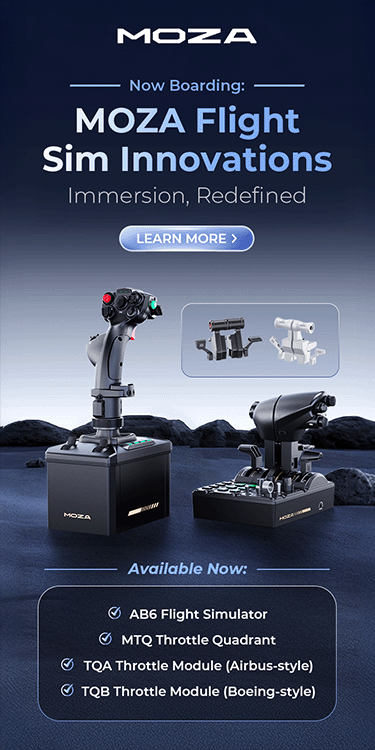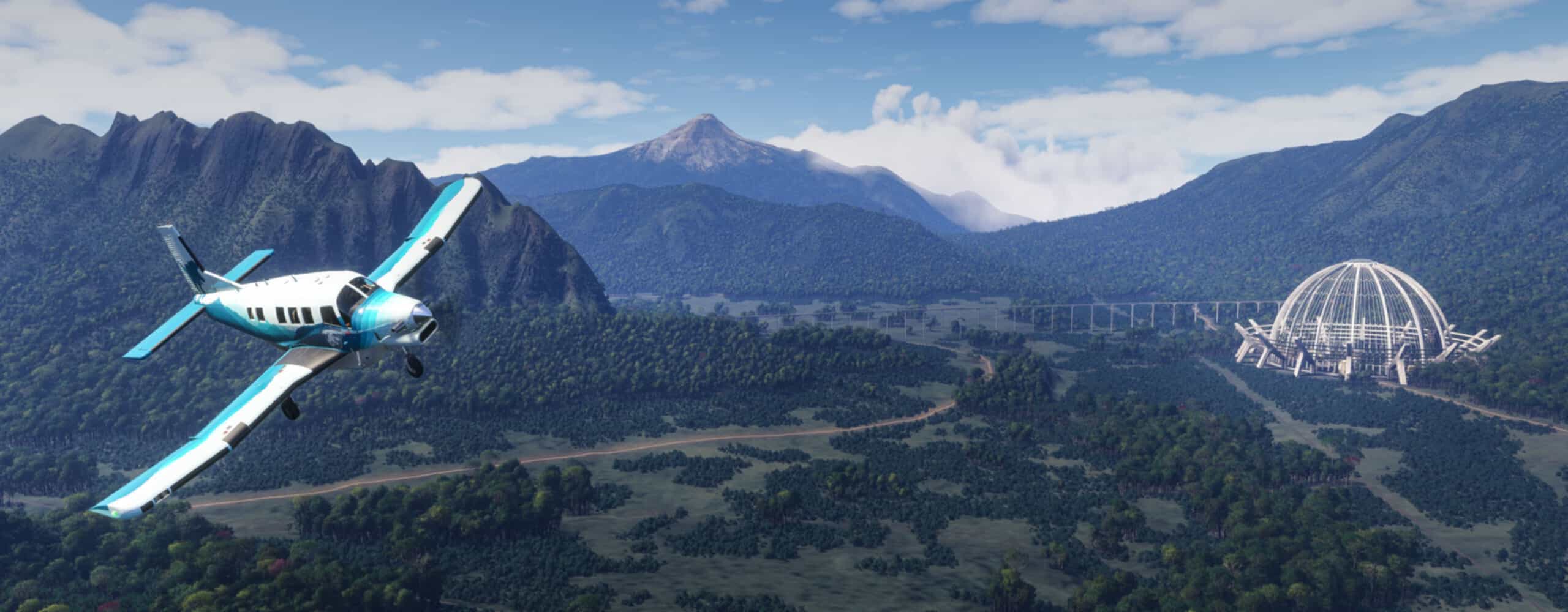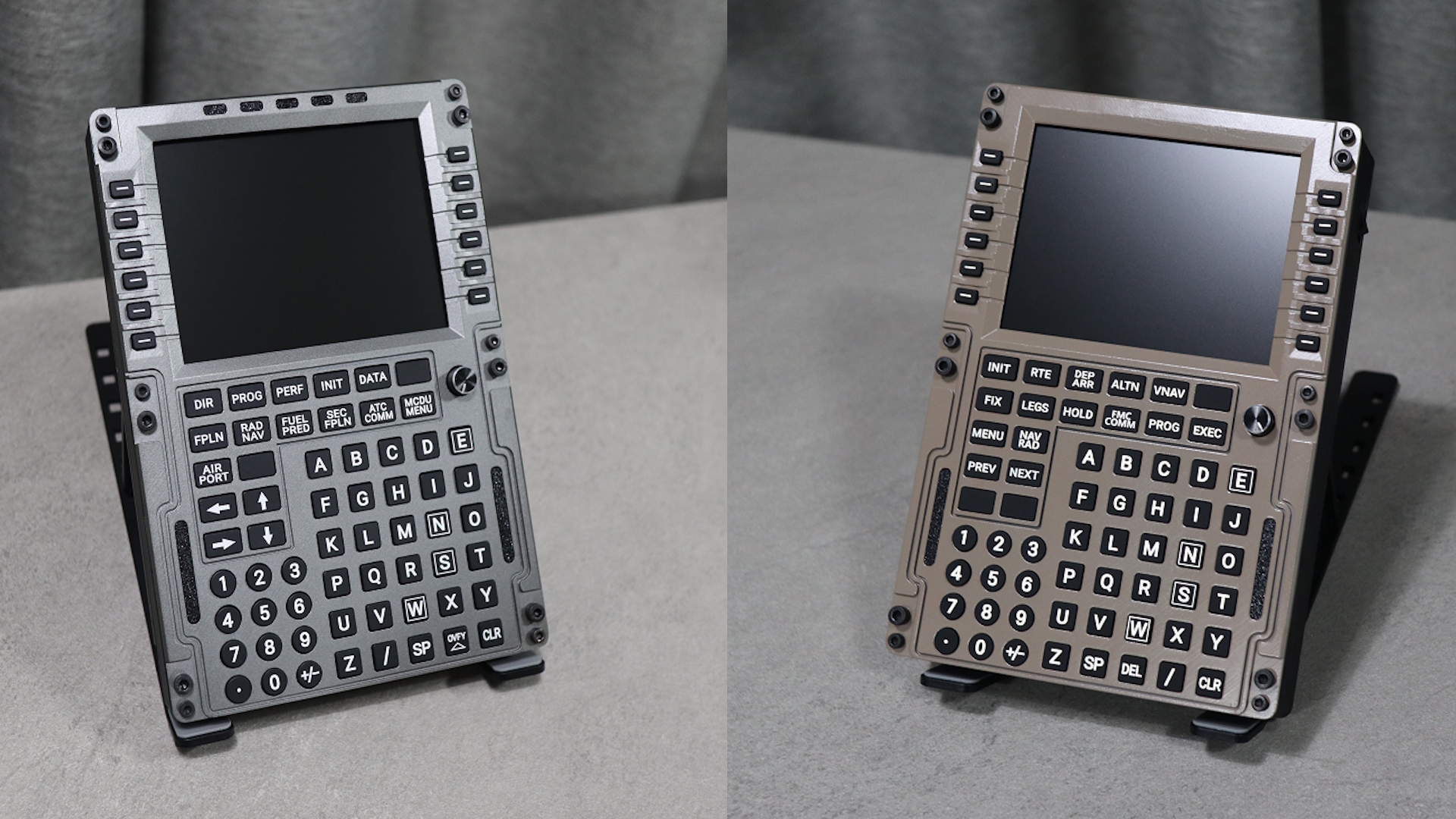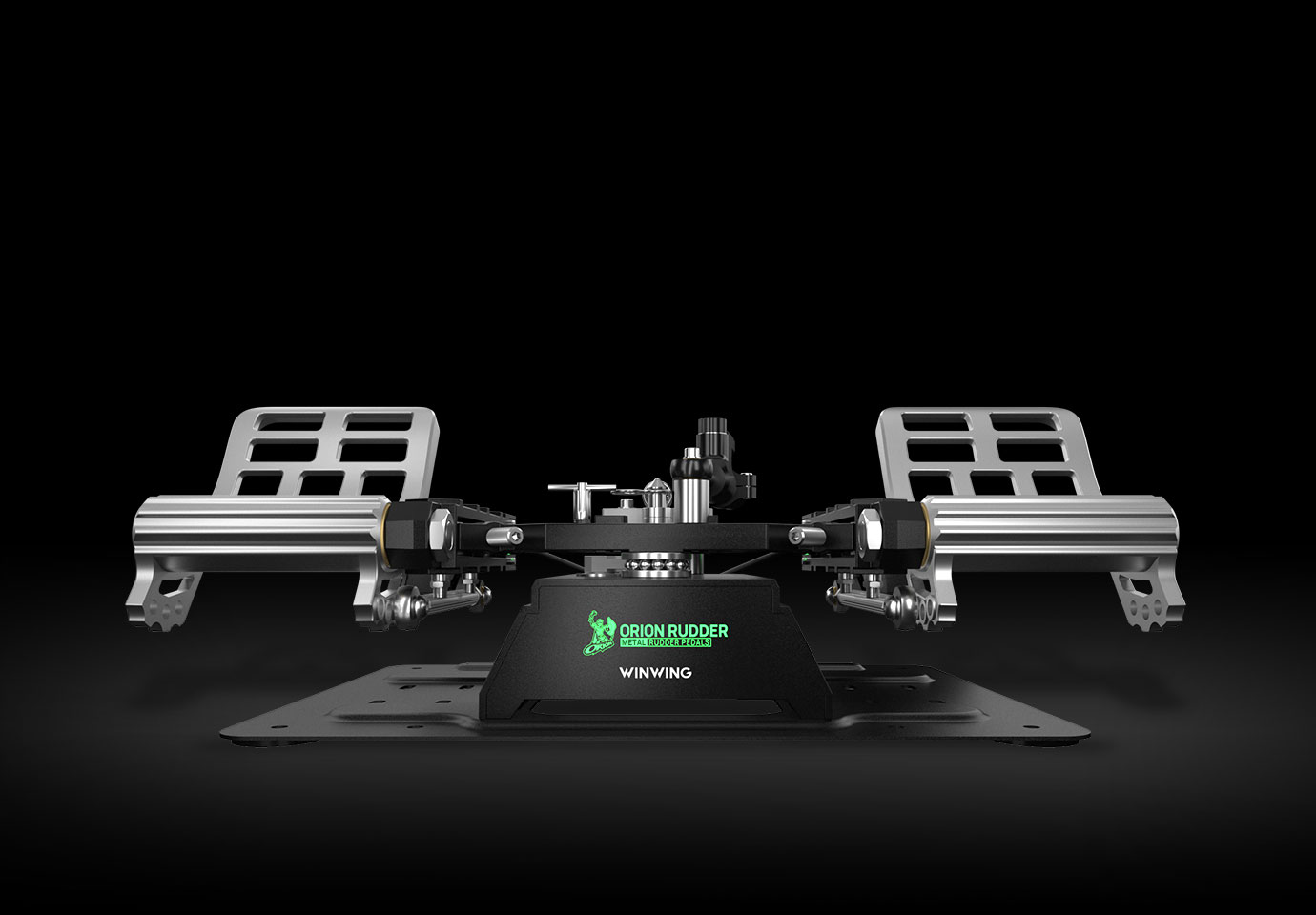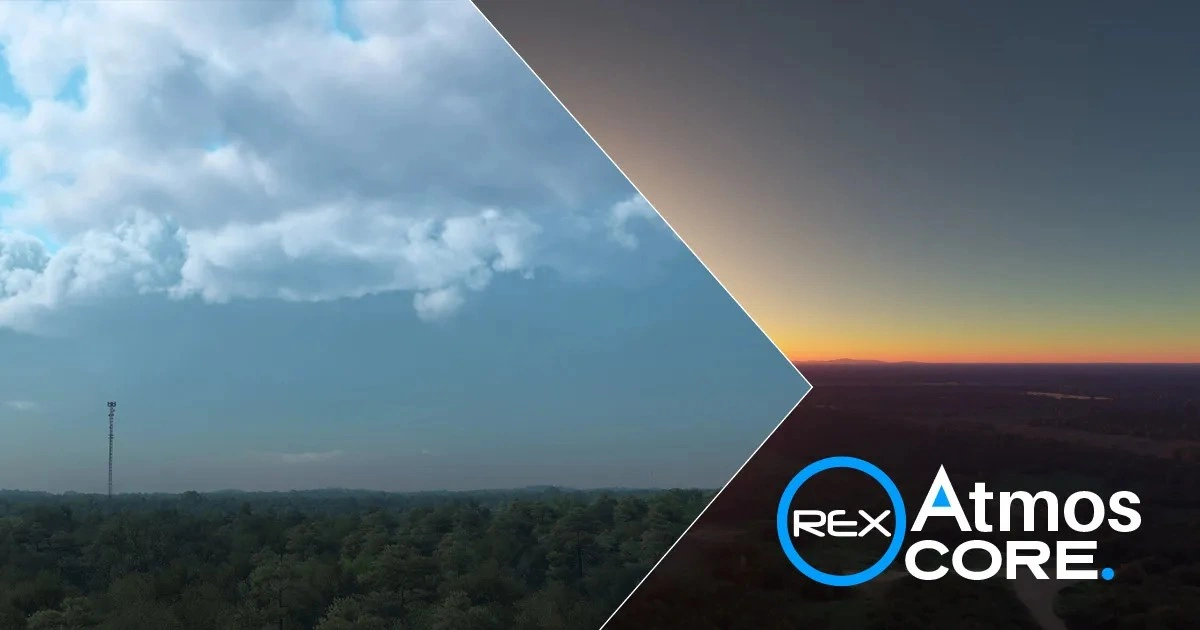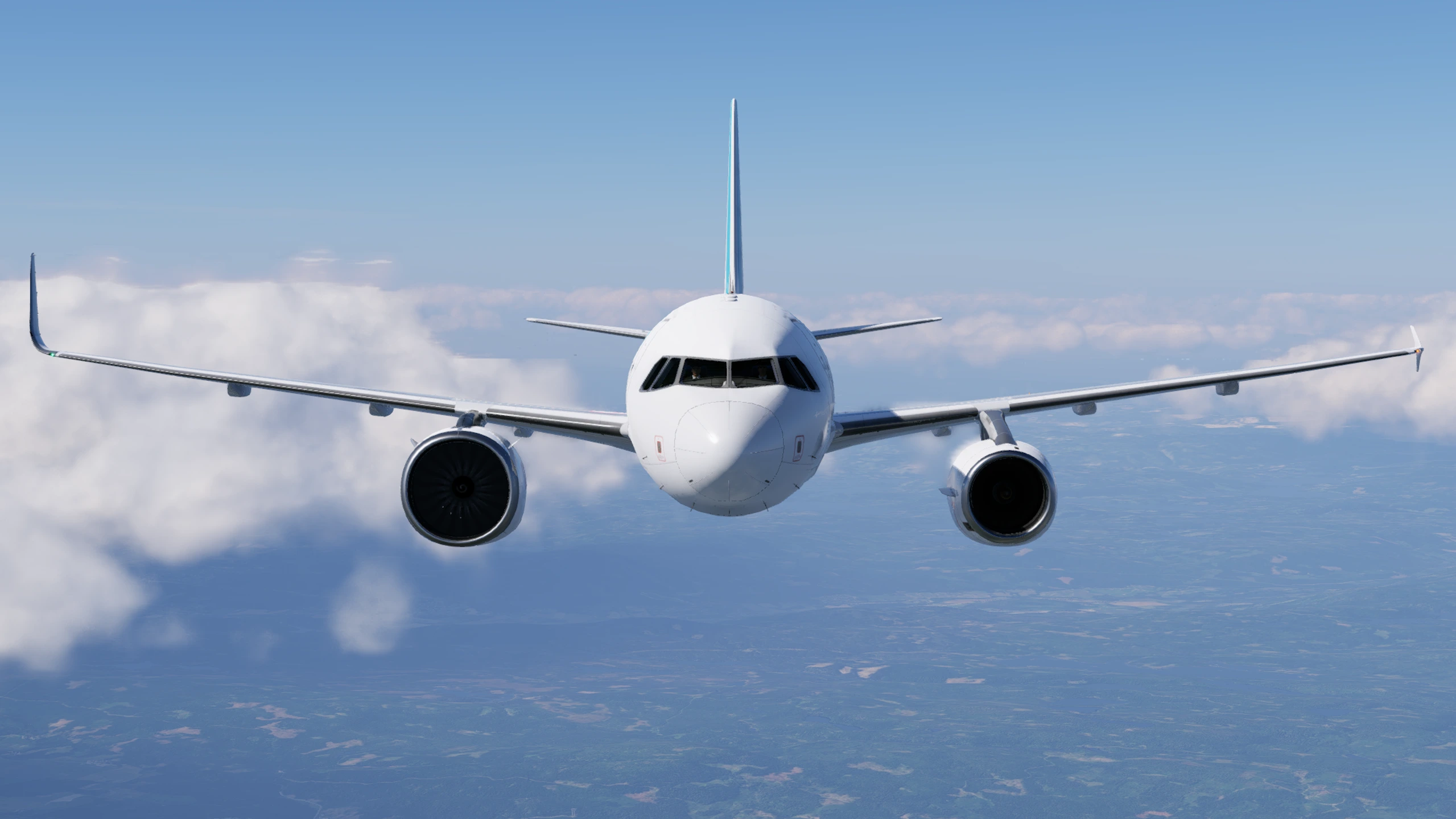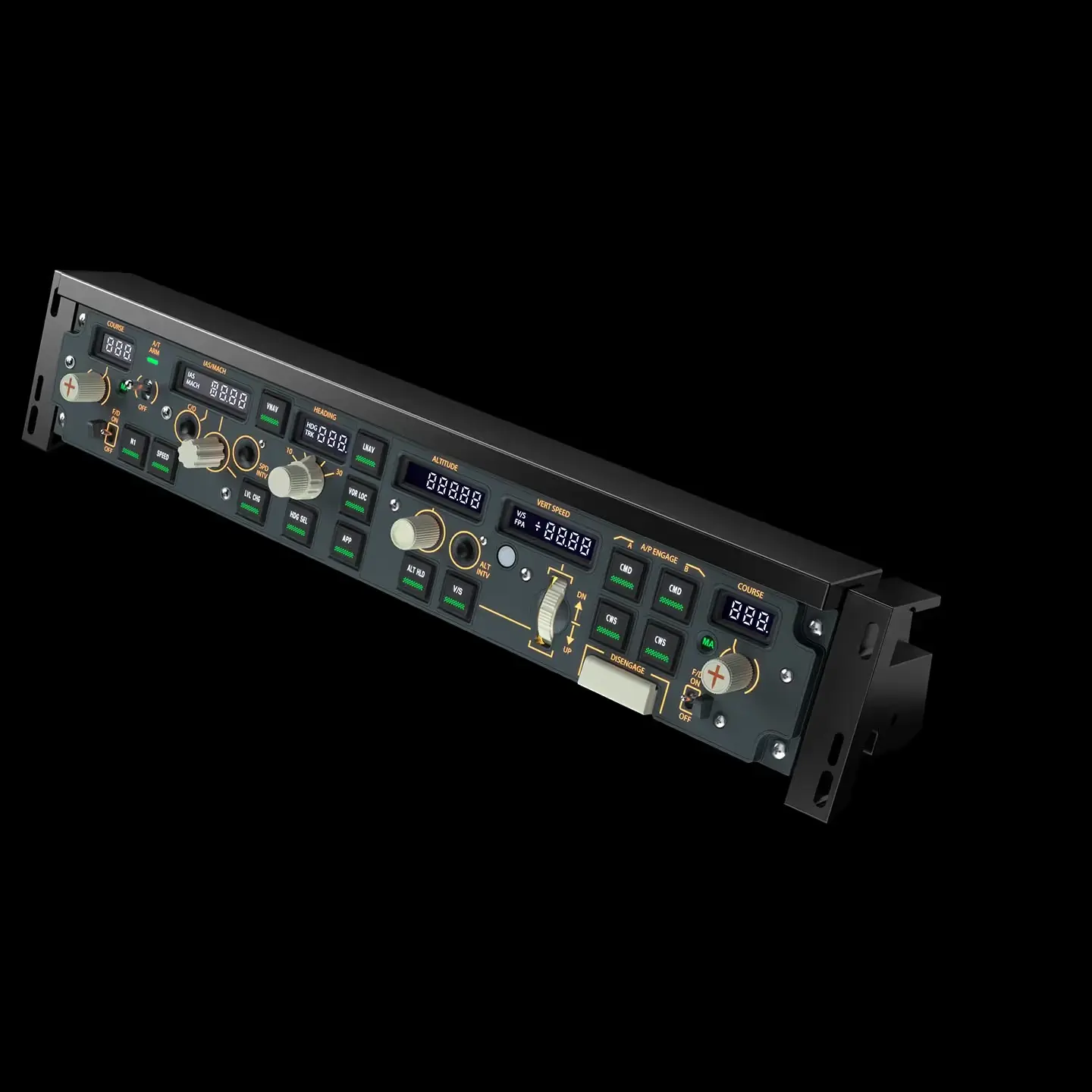Threshold Review: MK Studios' Düsseldorf Airport for MSFS 2020/2024
June 9, 2025
Introduction
Düsseldorf Airport (EDDL) is an International airport serving Rhine-Ruhr, Germany. Its yearly average of 19.1 million passengers makes it the fourth-busiest airport in Germany.

It was opened in April 1927 after two years of construction work, and its international debut was only in 1929 with SABENA, a Belgian airline, with their scheduled line between Brussels, Antwerp, Düsseldorf, and Hamburg.

The airport ceased to be used for civil purposes in 1939 due to World War 2. It was used by the German military during most of the war and then taken under control by the British army; it only opened for civil use in 1948.
As it was still under British occupation, British European Airways operated the first international flights after civil reopening (to London).
In 1950, the airport was transferred to a state-owned operations company, which is still in charge today.
Lufthansa's famous service between Düsseldorf and its two bases—Frankfurt and Münich—started in 1955 and still exists as of the time of writing this review (and probably for the foreseeable future).
The late 1960s and the impending jet era sparked the need for upgrades, leading to the extension of the main runway to 3000 meters. Work on a new terminal also started within that same time period, opening in 1973 as Terminal 2 (now known as Terminal B).
Terminal A opened in 1977, and Terminal C opened in 1986, formation of which is still roughly the same to this day.
In April 1996, sloppy welding work – without proper safety considerations – on an elevated road in front of Terminal A's arrival area led to sparks hitting the ceiling's insulation system, which was somehow exposed and extremely flammable – and toxic – due to its composition, quickly spreading around Terminal A and B, and suffocating everyone inside with highly poisonous smoke. Fortunately, primarily due to sheer luck and no responsibility of their own as the airport's fire brigade had no training whatsoever for indoor fires or evacuation procedures, on top of a very slow response time by Düsseldorf's fire brigade, the incident "only" took 17 lives, but it very well could have been much worse.
The aftermath of the incident – the worst airport fire to date – was the destruction of Terminal A and B, and Terminal C sustained enough damage to require redevelopment work. Passengers had to be housed in temporary tents until everything returned to working order.
After a five-year legal battle, the responsible parties were entirely acquitted. The welding company, the administration that didn't turn the elevators off, leading to casualties, the fire brigade that instructed people trapped in a lounge to stay put and not break the windows, and the people responsible for using a flammable and highly toxic material as insulation for the terminals—everybody walked away scot-free.
Terminal A was the first to be rebuilt and re-inaugurated in 1998. Terminal B's work started that same year, and the airport's name was changed from "Rhine Ruhr Airport" to "Düsseldorf Airport."
Terminal B and a new departure hall were re-inaugurated in 2001 after two and a half years of construction work, making it the third biggest airport in Germany.
A year earlier, the Düsseldorf Airport Train Station was inaugurated, being able to handle 300 departures per day and significantly increasing the airport's ease of access for passengers, leading to much higher passenger figures (they reached the 16 million passenger mark that year, which isn't too far from current figures).
The harsh lesson of the 1996 incident left a strong impression on the airport and its administration. Fire safety became one of their priorities, which led to Düsseldorf becoming a worldwide reference in fire safety and serving as a role model for other airports.
It was also directly responsible for delaying Berlin's Brandenburg Airport (EDDB), as its fire safety was deemed subpar at best. Germany did not want a potential repeat of the traumatic incident.
In early 2015, the airport underwent upgrades for A380 compatibility, as Emirates intended to fly theirs from Dubai. A parking position with three jetways was added, taxiways were widened, and new ground-handling equipment was purchased to handle the A380 properly.
The airport is an operating base for Condor, Corendon Airlines, Eurowings, Sun Express, and TUI fly Deutschland. Aegean Airlines, Aer Lingus, Air Cairo, Air France, Air Serbia, airBaltic, Austrian Airlines, British Airways, Croatia Airlines, easyJet, Emirates, Etihad Airways, Finnair, Iberia, ITA Airways, KLM, LOT Polish Airlines, Lufthansa, Norwegian Air Shuttle, Qatar Airways, Scandinavian Airlines, Swiss, TAP Air Portugal, Tunisair, Turkish Airlines, TUS Airways, and Vueling also serve it.
The scenery promises a highly detailed rendition of the airport, with high-quality 3D models, fully modeled terminal interiors, an up-to-date ground layout, custom jetways, custom night lighting, hand-crafted taxiway signs, precise airport and runway elevation data, custom points of interest, and much more.
Distribution
The scenery is distributed through Contrail and easily installed through their app.
First Impressions
Despite not being German nor ever even stepping foot in Germany, Düsseldorf Airport is somewhat special to me as it was one of the first airports I downloaded when I got into flight simulation a decade ago. There used to be a really good freeware rendition by Thomas Ruth for Flight Simulator X that I extensively used while doing my first Germanwings and Air Berlin operations, slowly learning the ropes of the mighty Airbus A320.

In the following years, Düsseldorf became my "base" as I did many domestic German flights and a fair share of holiday hops with Eurowings, Germania, and Air Berlin.

At one point in either 2021 or 2022, I got "bored" of being so Düsseldorf-centric and moved my pretend base to Köln-Bonn (EDDK), which I must admit I like just as much. But surely enough, that didn't stop me from shooting the occasional Münich to Düsseldorf, or Düsseldorf to Palma de Mallorca, or Düsseldorf to Kos, especially because I've always enjoyed doing Eurowings ops anyway.
When MK Studios announced they were going to make Düsseldorf, I must admit I was very excited. The rendition available at the time was somewhat acceptable, but nothing more than that. Things have changed over the development period, with a new Düsseldorf showing up, albeit only for Microsoft Flight Simulator 2024, which I couldn't touch properly due to my limited VRAM.
To be honest, the first course of thought when testing it was to break my whole "I always fly into the airport instead of loading in" and do a DUS - PMI, but I figured it wouldn't hurt to delay that for a little bit and fly to Düsseldorf first from another destination. As I wanted something nearby, Münich was the departure airport of choice, with a Lufthansa A321.
The fifty-four-minute flight went rather uneventfully, leaving a cloudy Münich for a CAVOK (!) Düsseldorf, which made me happy for two reasons: first, who doesn't love clear weather? Second, optimal lighting for the many screenshots that would follow that day.
I should have paid more attention to the part in the feature list where it mentions it has an accurate runway profile. If you are familiar with my product reviews, you probably heard me mention at one point or another that I loathe sloped runways as they are the bane of my existence (it's pretty much impossible to get a proper landing if they bend inwards instead of outwards).
My hopes of buttering the first landing were smashed (just like the landing gear) as it hit the ground at 288 feet per minute, partially because of the slope and partially because my muscle memory was not all that used to wingtip fences anymore, as I was doing a lot of Delta ops (they only fly the A321SL). I flared slightly lower than usual and cut the power too soon, and the result was obvious enough.

With my ego destroyed, I quietly taxied away into stand A03, where the real flight parked that day with D-AIDN. I didn't have that specific tail at hand, so I used AIDM instead.

The first thing that was remarkably obvious was how much attention was paid to the ground markings, the individually modeled taxiway signage, and all the wear and tear on the terminal and the jetway as it slowly approached my door to allow my passengers out.

Modeling / Texturing
In typical MK Studios fashion, as of recent years, the modeling absolutely does not disappoint. It is a very nice rendition of Düsseldorf's iconic passenger terminal, and its three concourses, with its characteristic shape and square/rectangular windows.


It's Düsseldorf like I have never seen before (I haven't tried Aerosoft's yet because I don't have enough VRAM for 2024, so this is taking other renditions into account), with a commendable degree of consistency across every important - and even somewhat unimportant - inch of its extension.


The terminals look their age, with moldy walls punished by years of rough German weather, decently selling the look of a seasoned airport rather than a brand new terminal straight out of the oven into your virtual realm.


They even modeled the train station nearby with custom signage and everything, almost making you wish you could actually drive trains around like a Train Sim World x Microsoft Flight Simulator's bastard son.


The interiors, albeit basic for performance, are wholly present throughout the terminal's massive extent, be it within the check-in area or the concourses themselves; you can venture through all of it. It's littered with 3D passengers, advertisements from local airlines, and custom-made advertisements for a fictional company (or so I assume) to avoid copyright issues. While that is not exactly a negative, I wish it wouldn't span across the airport's entrance doors as much as it does, but I get why they would do that, as it spares potential headaches in the future. Seeing vEWG logos every now and then made me smile a bit as part of their staff team.





From the pilot's point of view at the stand, though, the interior does a great job of selling the idea of a busy airport. You can see passengers and tiny and big monitors all through the frame of Düsseldorf's characteristic windows.



The ground texture work matches the quality of everything else thus far. It is clean and easy to navigate, ensuring you don't get lost during your summer operations on VATSIM with Eurowings, Condor, or TUI. There is nothing negative to point out there at all.




The ground clutter is mostly fully custom, with stuff scattered everywhere, just like you'd expect to see in a busy airport. Service vehicles, baggage carts, pushback tugs, you name it. The density feels spot on; it's not too overdone but not sparse, either. Add real traffic on top of that – or a busy day on Vatsim – and you got yourself a very busy-looking Düsseldorf.



The custom runway elevation profile is really a thing, and you can feel it through your landing gear (I promise you will). The displaced threshold is only there to make things even more complicated. Quite the tricky combo! The airport's whole elevation profile has also been considered and seems to be done well. I can't say it's accurate because I have never been to Düsseldorf in real life, but I heard good things about it from locals.

All in all, MK Studios successfully captured Düsseldorf's essence in their rendition, with striking consistency across the board and minimal compromises where applicable for performance friendliness (a very important tradeoff; more on that later).



Night Lighting
The nocturnal illumination is done remarkably well, with realistic light intensities and tone—not overly bright or dark, either. Seeing the terminal interior in all of its night-time glory from the funny square windows is quite amusing to me, as all the previous Düsseldorfs I used across many different simulators didn't have an interior per se.




On that interior note, the interior lighting at night does not disappoint either, especially considering it's a performance-friendly design focusing on efficiency rather than being a terminal simulator.



The taxiway lighting is also done well, making night flying a blissful experience even if you don't have ground charts.



Performance
My Setup: 32 GB RAM DDR5 6200 Mhz, Ryzen 7 9800X3D 5.2GHz, Nvidia GeForce RTX 3080 10 GB, 2 TB SSD NVMe


Microsoft Flight Simulator 2020 can be hard to understand at times. To contextualize, I haven't installed any of the photogrammetry updates for Germany since the simulator came out (I have always run the same installation since August 2020) and carried it over to my new machine with an external NVMe, using the same files. Thus, my Düsseldorf was as vanilla as it could be at first. The first approach into Düsseldorf was borderline atrocious in terms of performance, with my frames well into the 20s (something that became quite rare after my processor upgrade).


Of course, I didn't have the photogrammetry updates installed because of performance concerns. I was initially rocking a 3700X that couldn't even run properly at its advertised clock speeds because my motherboard was awful. It just barely sat at 4.2 GHz with a lot of throttling in between, especially under demanding scenarios such as playing MSFS 2020.


I intentionally kept it without the update at first, as that would mean flying over a non-photogrammetric Düsseldorf, which, at least in theory, should yield me way better performance. I then applied the update later and compared the performance loss, maybe suggesting in the review that uninstalling City Update 1 could be heavily beneficial to your overall performance with the airport.


Little did I know that I would find the exact opposite: upon installing the update, my performance increased, with my frames hardly dipping below 30 on final and always at or above 40 while on the ground, which is not shabby at all for a 10 GB 3080. I'm sure I could have gotten even better performance if I had more VRAM headroom or with an airplane that consumes less video memory, like the PMDG 738.



Therefore, surprisingly enough, from my own results, I'd recommend having the photogrammetry update installed if you want it to perform optimally rather than suboptimally. That was not the case with other airports, so that caught me very much off guard.



With the city updates installed and all its bells and whistles, the frames hover around 40-50 on ground and 33-40 on final, which is more than enough. If you have a 4000 series GPU, having double the framerate would already mean above 60, and hell, above 100 with a 5000 series GPU and MFG on. Granted, Lossless Scaling is also an option for those not fortunate enough to have FG, like me (if only it would work with my new PC).


The figures you will find are very much in line with most big airports: it's definitely not spectacularly smooth, but it's not a slideshow either. Plus, there are no weird GPU usage spikes when moving around the terminal, showing crazy attention to LODding, which is always good, especially for users on the low end of the spectrum.


Conclusion
For $20.52, MK Studios' Düsseldorf Airport is a very easy and resounding "yes!" Not only is it a good-looking and performing rendition, but it's also arguably the third-best airport in Germany as far as destination options go. There is a lot of short—and medium-haul action and eventual long-haul here and there, not to mention the tremendous variety of old-school routes from now-defunct airlines like Air Berlin and LTU.



Düsseldorf and summer are almost synonymous, although not in the same way as Palma de Mallorca or Ibiza and summer, but as an exit door to much warmer destinations in Europe, through Eurowings, Condor, or even Corendon. The variety of summer destinations is nearly endless.



A huge thank you to MK Studios for providing us with a review copy!
If you enjoy our content and want to support Threshold, consider joining us on Patreon!
Share this page
COMMENT ADVISORY:
Threshold encourages informed discussion and debate - though this can only happen if all commenters remain civil when voicing their opinions.

